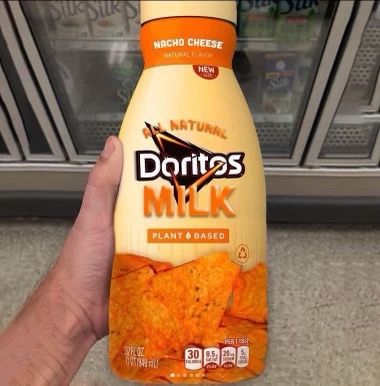The italics are a nice hint. Good Poe’s Law submission.
- 1 Post
- 87 Comments
But following the surface of a sphere causes you to constantly change direction

 3·4 months ago
3·4 months agoIsn’t reducing the size of the dataset worth it? I’d rather them have a picture from three years ago than a new scan every month or two.

 3·4 months ago
3·4 months agoIt’s not such a binary thing as winning or losing, it’s a constantly shifting process. The only way to actually lose is by giving up – instead, consider it making it as hard as possible for your privacy to be infringed upon. Sometimes it’s more inconvenient, but what makes us such a farmable populace is our reluctance to be inconvenienced. Be good at being uncomfortable.

 2·4 months ago
2·4 months agoI refused, it went fine. I had to repeat myself because it was unexpected and dudebro wasn’t prepared, and they had to turn on the other machine and wait for it to start up, but it only delayed me like 2 minutes. The more people ask, the easier it gets.
 7·5 months ago
7·5 months agoConsidering freezer storage tessellation as a deciding factor in your storage container shapes feels like putting theory way ahead of practice. But I still want them.

 1·5 months ago
1·5 months agoWhy not delete the comment and respond to the right person? Not that you should at this point, but it would have taken less time than explaining it in an edit so I’m curious

 2·5 months ago
2·5 months agoThe mishandling is indeed what I’m concerned about most. I now understand far better where you’re coming from, sincere thanks for taking the time to explain. Cheers

 4·5 months ago
4·5 months agoThanks for the response! It sounds like you had access to a higher quality system than the worst, to be sure. Based on your comments I feel that you’re projecting the confidence in that system onto the broader topic of facial recognition in general; you’re looking at a good example and people here are (perhaps cynically) pointing at the worst ones. Can you offer any perspective from your career experience that might bridge the gap? Why shouldn’t we treat all facial recognition implementations as unacceptable if only the best – and presumably most expensive – ones are?
A rhetorical question aside from that: is determining one’s identity an application where anything below the unachievable success rate of 100% is acceptable?

 8·5 months ago
8·5 months agoCan you please start linking studies? I think that might actually turn the conversation in your favor. I found a NIST study (pdf link), on page 32, in the discussion portion of 4.2 “False match rates under demographic pairing”:
The results above show that false match rates for imposter pairings in likely real-world scenarios are much higher than those from measured when imposters are paired with zero-effort.
This seems to say that the false match rate gets higher and higher as the subjects are more demographically similar; the highest error rate on the heat map below that is roughly 0.02.
Something else no one here has talked about yet – no one is actively trying to get identified as someone else by facial recognition algorithms yet. This study was done on public mugshots, so no effort to fool the algorithm, and the error rates between similar demographics is atrocious.
And my opinion: Entities using facial recognition are going to choose the lowest bidder for their system unless there’s a higher security need than, say, a grocery store. So, we have to look at the weakest performing algorithms.
What is a question of analogues?
I like the idea of some numbers being popular hand gestures.
4 - Fuck you; 17 - Shaka (hang loose); 18 - Metal horns; 19 - “I love you”; 132 - Double fuck you
I love this! Except it won’t take because it starts with “musk”.

 4·6 months ago
4·6 months agoPizza with mushrooms, green peppers, beef, crab meat, and oysters from the can
looking at image And cheese, right?
…
…and cheese, right?

 6·6 months ago
6·6 months agoPut a bidet on your wishlist
I use 8! My mom called me ridiculous for doing that :(

 2·6 months ago
2·6 months agoYeah I got the impression it was a recoverable condition after a search found a bunch of guides for “unbricking” (Android phones). Semantics are the true enemy it seems





I’d call that a rattlin’ bog